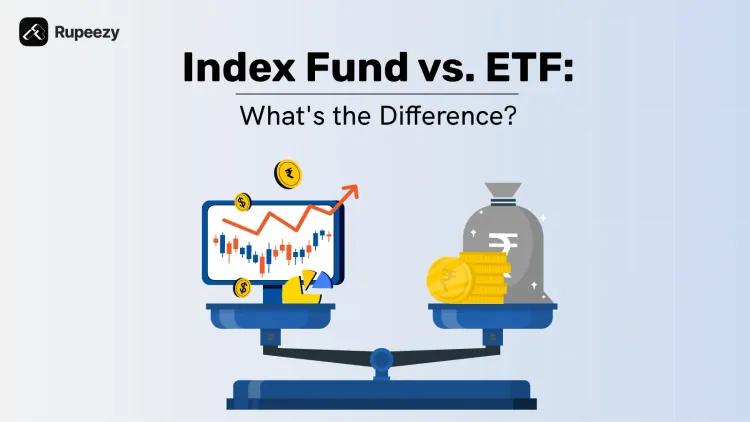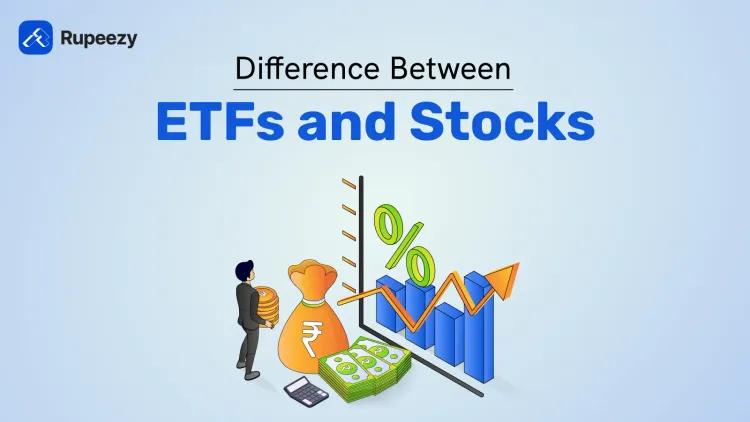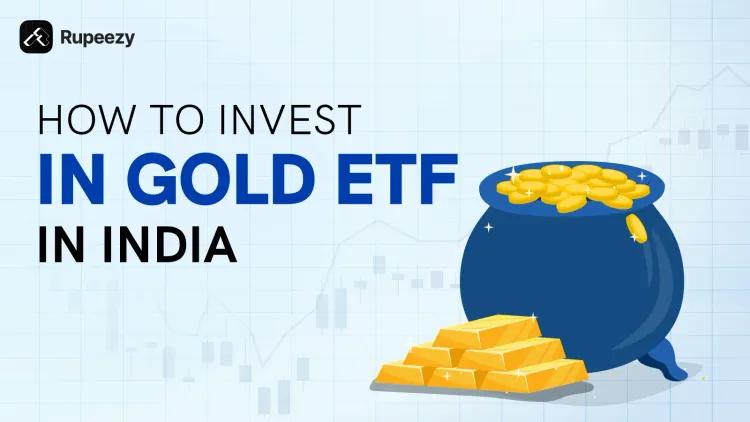What is Inverse ETF? Types, How to Invest, Top Inverse ETFs


00:00 / 00:00
It is not necessary that the stock market always remains bullish. Many times the market also sees a decline and even at such times some smart investors make profits. This is where Inverse ETF comes in as a financial tool that tries to give returns even when the market falls. If you think that the market is going to fall, then this can be a useful option. In this blog, we will know in detail what an Inverse ETF, how it works and for whom it is right.
What is an Inverse ETF?
An Inverse ETF is an exchange traded fund that tries to give the opposite return to the performance of an index such as Nifty 50 or Sensex. Meaning if the index falls by 1%, the Inverse ETF rises by about 1%. The purpose of such an ETF is to profit from market decline or to hedge the portfolio. These funds generate returns using derivatives such as futures contracts. They are usually used for short-term trading or when there is a possibility of a decline in the market. What is an Inverse ETF? This question is being asked more in today's volatile markets, especially when investors look for safe options for hedging or short selling. However, it is not suitable for long-term investment as it tracks daily returns, not long-term performance.
How Inverse ETFs Work
An Inverse ETF is a fund designed to benefit when the stock market falls. When a major index such as Nifty 50 goes down, the price of an Inverse ETF can go up. These funds do not buy shares directly, but use futures and other special financial tools. Their purpose is to give the opposite return on a daily basis. This means that they reset their strategy at the end of each day so that they can move in the opposite direction of the index again the next day. For example, if Nifty falls 1% today, the Inverse ETF can rise by about 1%. But if the market fluctuates too much, the returns of these funds can sometimes be different from expectations. Therefore, these funds are good for trading or hedging in the short term, but are not considered for long term investment.
Types of Inverse ETFs
There are mainly three types of Inverse ETFs, based on how they work and the level of risk:
Single Inverse ETFs (1x): These are the simplest and most common type of Inverse ETFs. They track the daily inverse returns of an index. For example, if Nifty 50 falls by 1% today, this ETF will rise by about 1%. These funds reset their returns on a daily basis.
Leveraged Inverse ETFs (2x or 3x): These funds aim to give double (2x) or triple (3x) inverse returns of the index. For example, if an index falls by 1%, these ETFs may rise by 2% or 3%. But these ETFs carry higher risk as they are more sensitive to volatility and are not designed for the long term.
Sector-Specific Inverse ETFs: These ETFs track the inverse performance of a particular sector such as technology, banking or healthcare index. If that sector falls, these ETFs can rise.
Investment should be done only after understanding these options. It is very important to look at a reliable inverse ETF list before investing and decide your investment strategy so that the risk can be managed properly.
Inverse ETFs vs Short Selling
Aspect | Inverse ETFs | Short Selling |
How it works | This fund gives inverse returns of the index, through futures and derivatives | Investor borrows shares and sells them, then buys them back later |
Risk | Limited risk as the loss does not exceed the amount invested | Risk of unlimited loss as the stock price may rise |
Accessibility | Can be easily bought and sold in the stock market | It requires a margin account and permission to borrow |
Benefit | Easier, less complex, no interest or lending charges | Selling shares directly is beneficial, but can be complicated and costly |
Who likes it | Retail investors who want to make profits even when the market falls | Experienced and large investors who have margin accounts |
Apart from short selling, some traders also use the Margin Trading Facility for taking advantage of short-term market moves. Under MTF, the broker finances a portion of your stock purchase, allowing you to take larger positions with limited capital. While it can help active traders respond quickly to market swings, it also carries the responsibility of managing leveraged exposure carefully.
Inverse ETFs are a safer and more convenient option for retail investors, as they do not require borrowing shares or paying interest. On the other hand, short selling involves higher risk and expenses, so common investors prefer it less.
When to Use Inverse ETFs
During market downturns: When you feel that the market will go down or the market will fall sharply, Inverse ETFs can prove to be helpful for investors. This fund is an effective way to protect your investment from market downturns.
Portfolio Protection (Hedging): If you have a long investment portfolio and want to protect against volatility, then Inverse ETFs can be used for hedging. This helps you to reduce losses.
Better for short term investment: It is not considered right to keep Inverse ETFs for a long time because they give returns based on daily performance, due to which the returns are not stable in the long term. Therefore, most investors use them as an investment in short term trading or temporary market weakness.
Top Inverse ETFs in India and Globally
Inverse ETFs in India
The choice of Inverse ETFs in India is limited as SEBI has not yet fully approved the regulations for these. Hence, there are currently no popular Inverse ETFs available in the Indian market. For instance, Motilal Oswal or other big fund houses have not launched the Nifty 50 Inverse ETF. SEBI notes that these products are complex and can be risky for retail investors, hence, stringent regulations have been made for them. Hence, investing directly in Inverse ETFs in India is not possible at present.
Globally Inverse ETFs
Inverse ETFs are quite popular globally, especially in the US market. Some of the prominent Inverse ETFs are:
ProShares Short S&P 500 (SH): This ETF tracks the inverse performance of the S&P 500 index.
ProShares UltraShort QQQ (QID): It gives 2 times the inverse return of the Nasdaq 100 index.
Direxion Daily S&P 500 Bear 3X Shares (SPXS): It gives 3 times the inverse performance of S&P 500, which is an option with high risk and high return.
Investors in India can invest in these Inverse ETFs through overseas markets but need to fully understand the rules, procedures and risks involved.
Risks and Limitations of Inverse ETFs
Daily compounding effect: Inverse ETFs reset returns every day, so their returns may differ from the expected ones in the long term. Especially when the market is stable or moves sideways, these ETFs do not perform well.
Not suitable for long-term: These funds are designed for short term investment or hedging. Holding them for a long time can be risky as their performance depends on the daily movement of the market.
Higher risk in leveraged Inverse ETFs: Inverse ETFs with 2x or 3x leverage have higher volatility, which increases the risk of loss. Their performance can be harmful for investors in constant market volatility.
Caution and attention to time are important: While investing in Inverse ETFs, it is important to understand the right time and risk so that losses can be avoided. These funds are better for careful and strategic investment.
Taxation on Inverse ETFs
Tax rules in India: Inverse ETFs are considered non-equity funds. Long-term capital gains tax of 20% (with indexation) is applicable on holdings of more than 3 years. Short-term capital gains tax is applicable on holdings of less than 3 years, as per the income tax slab.
Taxation for global investors: Indians investing in foreign Inverse ETFs have to follow foreign investment rules. Tax relief can be available under the Double Taxation Agreement (DTAA) between India and the US.
How to Buy Inverse ETFs?
Opening a Trading Account: To invest in Inverse ETFs, it is first necessary to open a reliable brokerage account. This can be done easily through popular brokerage companies like Zerodha, Rupeezy and Upstox. Due to limited Inverse ETFs available in India, one has to trade on the NSE or BSE to buy whatever ETF is available.
Options for Foreign Inverse ETFs: Investing in foreign Inverse ETFs involves using global brokers such as Interactive Brokers or other international platforms that facilitate trading in foreign markets.
Who Should Invest in Inverse ETFs?
Better option for short-term traders: Inverse ETFs can be a good option for investors who expect short-term decline in the market and want to take advantage of it. These are people who understand technical analysis or market trends well.
Suitable for experienced and active investors: For those who understand market fluctuations and who regularly keep an eye on the market, these ETFs can prove to be an effective tool. Especially if there is a possibility of a decline in a sector or index, these can give good returns.
Not for long-term investors: If an investor wants to invest for a long period or does not want to take much risk, then Inverse ETFs are not suitable for them. These funds are based on daily returns, so holding them for a long time can be risky.
Only for those who understand risk: Before investing in Inverse ETFs, it is very important for that person to know about risk, leverage and market direction. Investing in it without proper understanding can be harmful.
Conclusion
Inverse ETFs are an interesting option for investors who have a strategy to profit from market declines. These trading tools are specifically designed for the short-term and are best suited for those who have experience in understanding the market direction. However, they carry high risk, so full knowledge and preparation are important before investing. It is always wise to consult a qualified financial advisor before making any financial decision. With the right strategy, it can help balance the portfolio.
FAQs
Q. What is an inverse ETF for?
Inverse ETF is used to profit from market decline. It gives returns in the opposite direction of the index.
Q. Is there any inverse ETF in India?
There are currently very limited Inverse ETFs in India, but some funds offer such options to protect against falling markets.
Q. Can beginners invest in inverse ETFs?
This is not recommended for beginner investors as it involves high risk and requires a deep understanding of the market.
Q. How long should one hold inverse ETFs?
These funds are made for short-term use, so it is better to hold them for a few days or weeks only.
Q. Do inverse ETFs pay dividends?
Most Inverse ETFs do not pay dividends as they aim to provide only short-term returns.
Check Out These Related Articles |
The content on this blog is for educational purposes only and should not be considered investment advice. While we strive for accuracy, some information may contain errors or delays in updates.
Mentions of stocks or investment products are solely for informational purposes and do not constitute recommendations. Investors should conduct their own research before making any decisions.
Investing in financial markets are subject to market risks, and past performance does not guarantee future results. It is advisable to consult a qualified financial professional, review official documents, and verify information independently before making investment decisions.

All Category










